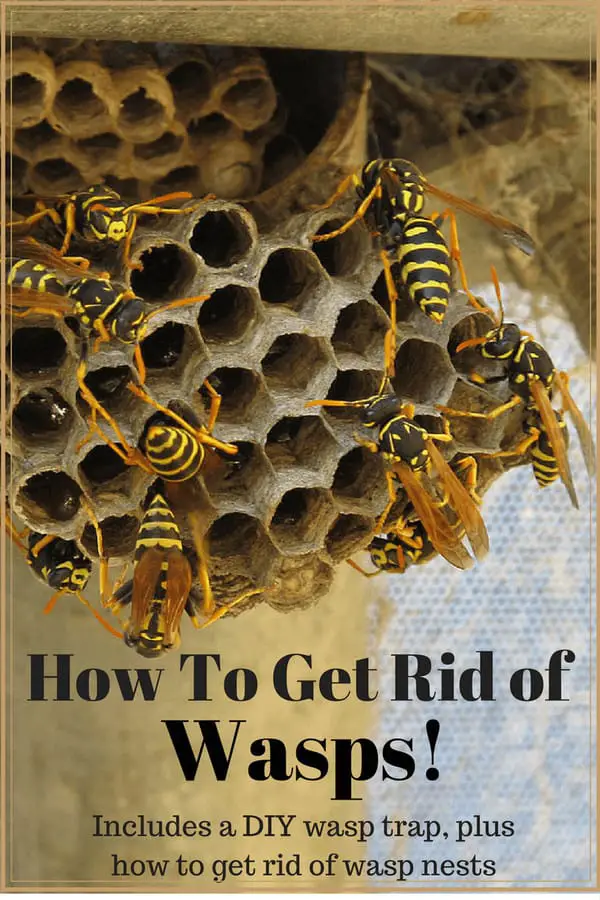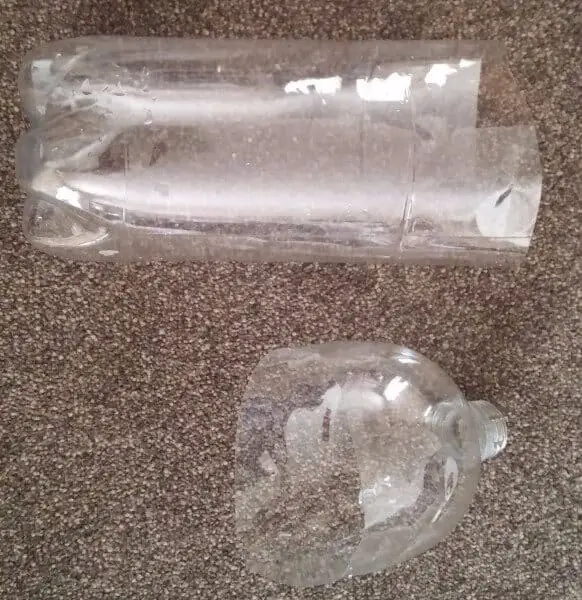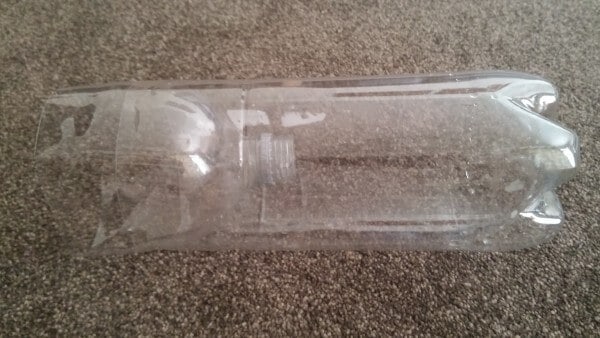how to get rid of wasps and hornets

There's nothing as terrifying – and painful – as finding yourself surrounded by the buzzing of wasps or hornets. If you've spent any time in your yard or enjoying the peaceful serenity of nature, you've likely had an encounter with these flying demons. Regardless of where you've had this encounter, the overwhelming desire to never have to deal with such creatures is universally strong.
Before learning how to get rid of wasps and hornets, it's important to learn about these creatures. There are distinct differences between these two bugs. Understanding these differences can help set up effective and long-lasting remedies.
Wasps | A Basic Overview
The terms "wasps" and "hornets" can be quite confusing as they are often used interchangeably. However, a wasp is its own species of insect, which is strikingly different than hornets. Unlike bees, which survive on a diet of pollen or nectar, the majority of wasps live on a diet of other insects. Wasps are social creatures, and much like bees, live in a colony.
As winter gives way to spring, wasp colonies begin to flourish. A colony is started with a single queen wasp that survived the winter. Worker wasps build their nests out of paper, which they naturally produce by chewing on wood, cardboard or scraps of paper. In the beginning, a wasp colony is small. However, as summer progresses, the number of wasps rapidly develop. By the end of summer, a social wasp colony can be in the hundreds.
When fall approaches, only a handful of wasps remain. These typically include several fertile females, which are potential queens, and several males. As the temperatures turn cooler, colony is abandoned and the fertilized female wasps scatter in search of shelter. The remaining male wasps die with the cold weather.
Wasp Quick Facts
- Wasps are typically smaller than hornets. These insects measure less than 1 inch.
- The nests of wasps are both found suspended in the air or on the ground. It's not uncommon for a nest to be built underground. In general, a single nest can hold anywhere from 100 to 5,000 individual worker wasps.
- Wasps can range in color, which makes it difficult to suggest a single primary coloration.
- Wasps prey on other insects. While some wasps may feed on pollen or nectar, they are not pollinators. They often scavenge for sweets and proteins.
- Unlike popular belief, the average social wasp is not an extremely aggressive insect. This is quite different than yellow jackets, which are extremely aggressive. A social wasp is only likely to sting if it feels threatened. When compared to bees, which generally die after a sting, a wasp can sting multiple times without perishing.
Hornets | A Basic Overview
Hornets belong to the Vespa genus and closely resemble social wasps. Because of this, many confuse these two insects as being the same bug. However, this couldn't be further from the truth. There are over 20 different hornet species, which can be found throughout Europe, North America and Africa.
Much like wasps, hornets are social insects. They construct hives by chewing wood and transforming these shavings into a paper-like pulp. Hives flourish through a fertile queen hornet, who primarily gives birth to asexual female workers. There are very few male hornets. The few males born have a very specific job – mating with the queen. After their sexual task is completed, they die soon thereafter.
In the same vein as wasps, hornets thrive during the spring and summer months, only to die during winter. The majority of worker hornets do not survive the colder months; however, fertile queens survive by finding shelter under tree bark or sneaking into your home. As soon as winter gives way to spring, the fertile queen begins laying eggs and a new hive is born. Before the queen dies, she gives birth to several queen hornets and males. This ensures the next generation of hornets is healthy, strong and capable of building a new nest.
Worker hornets defend their hive with venom-filled stingers. Unlike yellowjackets, which are quite aggressive toward humans and animals, hornets only attack when they feel the nest is threatened.
Hornet Quick Facts
- Hornets measure anywhere from 1 to 1.5-inches in length. They are typically larger than wasps and other stinging insects within the same genus.
- The nests are constructed out of a paper-like pulp and are globular in shape. Nests are elevated above ground, such as in trees or along the gutters of a home. The colony size of a hornet nest is much smaller than wasps. The average hornet colony houses anywhere from 100 to 700 workers.
- Hornets feature two distinct color variations. They are either black and white or feature a brownish-reddish color.
- Hornets feed off other insects. They rarely go after pollen and typically don't scavenge for sweets or proteins. This is why the majority of hornets are immune to general traps that use sweets.
- If the nest is undisturbed, hornets are not likely to sting. However, if the nest is disturbed or the hive feels threatened, hornets can be extremely aggressive. A single hornet can sting an individual several times in a row, which leads to severe pain.
- The venom in a hornet sting can lead to serious allergic reactions in some individuals. The quantity of stings sustained in an attack may result in life-threatening reactions to those sensitive to its venom.

How To Get Rid Of Wasps And Hornets
Wasp Trap | How To Get Rid Of Wasps Safely
Now that you have a more thorough understanding of these insects, how do you get rid of wasps? Of course, you have the option of hiring a professional pest management service, but these services are often very expensive and use harmful toxins to control wasp and hornet colonies. If you're searching for a more natural way to eliminate these insects, you may want to look into homemade wasp traps.
By the time wasps or hornets become a concern, it's likely because a colony has grown to exponential numbers. As a general rule of thumb, if the wasps aren't causing a problem, such as a nest far away from social spots or areas of your yard where you and friends congregate, it's best to leave the hive alone as it'll disappear during the fall and winter months.
The most effective way to safely eliminate wasps and hornets from your property is to limit the number of potential nesting spots. Seal all openings in hollow tubing, such as the interior piping of children's playground equipment. Of course, if you're dealing with a large, active nest, you're going to need more proactive measures.
While there are many insecticides on the market designed to kill wasps and hornets, these can fill your yard with poison. The toxins used in the majority of commercial insecticides are dangerous for the environment, pets and humans. Perhaps the most effective form of pest control is making a homemade wasp trap out of materials you likely have around the house.
Homemade Wasp Trap | Step-by-Step Instructions
The basic premise of this homemade wasp trap is quite simple. With a standard 2-liter soda bottle, wasps enter the bottle, get trapped and die. This is one of the most effective remedies to minimize the number of wasps; however, the only way to completely eliminate wasps is by removing their nest and killing their queen. This will be discussed in the next section.
 Cutting the top of the soda bottle for the homemade wasp trap
Cutting the top of the soda bottle for the homemade wasp trap
Step-by-Step Directions for the Homemade Wasp Trap
- Step One | Gather a 2-liter plastic soda bottle and cut the neck of the bottle around 4-inches below the bottle cap region.
- Step Two | Remove the freshly cut neck and flip it upside down. Place it in the opening of the bottle you just cut.
- Step Three | With packing or duct tape, tape these two pieces together. Make sure the tape is secure and there are no openings in the seams.
- Step Four | Because wasps and hornets are attracted to protein, place several pieces of raw meat inside the bottle. While some suggest sugar water, this doesn't always attract wasps. Rather, you'd likely collect an army of yellowjackets or other insects, such as honey bees..
- Step Five | To prevent the wasps and hornets from climbing out of the bottle, coat the interior lining of the flipped portion of the bottle with petroleum jelly.
- Step Six | Hang the wasp trap by attaching it to a string and place it away from where you and your family gather. A great spot is along the perimeter of your yard.
- Step Seven | Once the bottle is full, which may take several days, pour boiling water into the bottle to ensure all the wasps are dead. Dispose of the bottle in an outdoor trashcan and replace with a new wasp trap.
 Homemade wasp trap! Made in 2 Minutes!
Homemade wasp trap! Made in 2 Minutes!
Natural Wasp Nest Killer
Exercise extreme caution when messing with nests! Make sure children, pets and neighbours are out of harms way. If you're unsure, you may want to consider a pest control company to destroy the nest safely.
As mentioned earlier, the only way to truly eliminate these pests is to kill the nest and all its inhabitants. Up until recently, the majority of products contained harmful poisons to accomplish this goal. However, there is a new product capable of safely eliminating wasp nests without the use of harsh ingredients.
EcoSMART Organic Wasp and Hornet Killer utilizes natural plant and tree extracts to safely and effectively kill nests and colonies. When used with the aforementioned homemade wasp trap, this is one of the most effective ways to keep these pests at bay.
When using this product, it's important to keep safety in mind. You never want to try and kill a nest while standing close to it. Wasps and hornets get quite agitated when their nest is disturbed. So you only want to use a product with far-reaching jet spray. This product features an 18-foot spray, which allows you to be close enough for an accurate reach, but far away enough to prevent being stung. Locate the wasp or hornet spray.
Stand 15 to 18-feet away and thoroughly spray the nest with this product. Try to completely saturate the nest, but if the wasps come out and begin making their way toward you, immediately seek shelter and repeat at a later time. It's best to do this in the early morning hours when the entire hive has returned from its day of seeking food and supplies. Repeat if the hive is not completely destroyed.
Wasp and Hornet Prevention | Keep the Insects Away
One of the most effective natural prevention methods is also one of the least understood. Homeowners and insect research alike aren't sure why it works, but as millions will attest, it's incredibly effective – and easy.
To prevent wasps, hornets and other insects from infiltrating your home or yard, simply fill a clear, sealable plastic bag with water and place 3 to 5 coins in it. Seal the bag and hand along the perimeter of your home and yard. Instantly, wasps, hornets and other flying insects will immediately leave your property.
While it's not known exactly why this works, the most commonly accepted hypothesis is these creatures feel threatened by the hanging bag of water. They may believe that it's another hive. The majority of wasps and hornets do not wish to nest near a competing hive. Therefore, they'll leave your property and seek shelter in another location.
If you're looking for a professional visual deterrent, then you may be interested in the Get Lost Wasp Deterrent. This preventative measure looks like a common wasp hive. It works by activating the natural territorial behavior of wasps. According to the manufacturer, it prevents wasps and hornets from building a hive within 200 feet of its location. Hang this product underneath decks, eaves or in tree canopies.
It's suggested to hang several throughout your property to keep it completely free from wasp and hornet colonies. When combined with the water bag method, you can expect zero wasp or hornet nests. This is, by far, the most environmentally-friendly method of keeping these insects away. The goal is to not kill off these insects, but rather, prevent them from entering your space.
(Images from: slgckgc)
how to get rid of wasps and hornets
Source: https://knowledgeweighsnothing.com/get-rid-wasps-and-hornets/
Posted by: pellhamshoulmons.blogspot.com

0 Response to "how to get rid of wasps and hornets"
Post a Comment